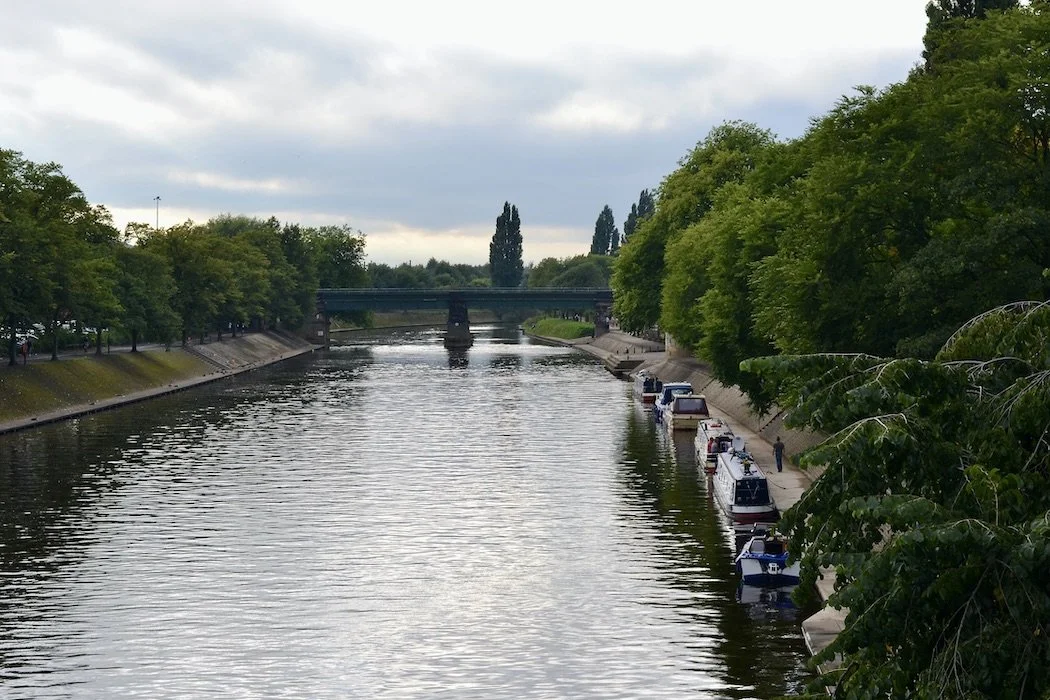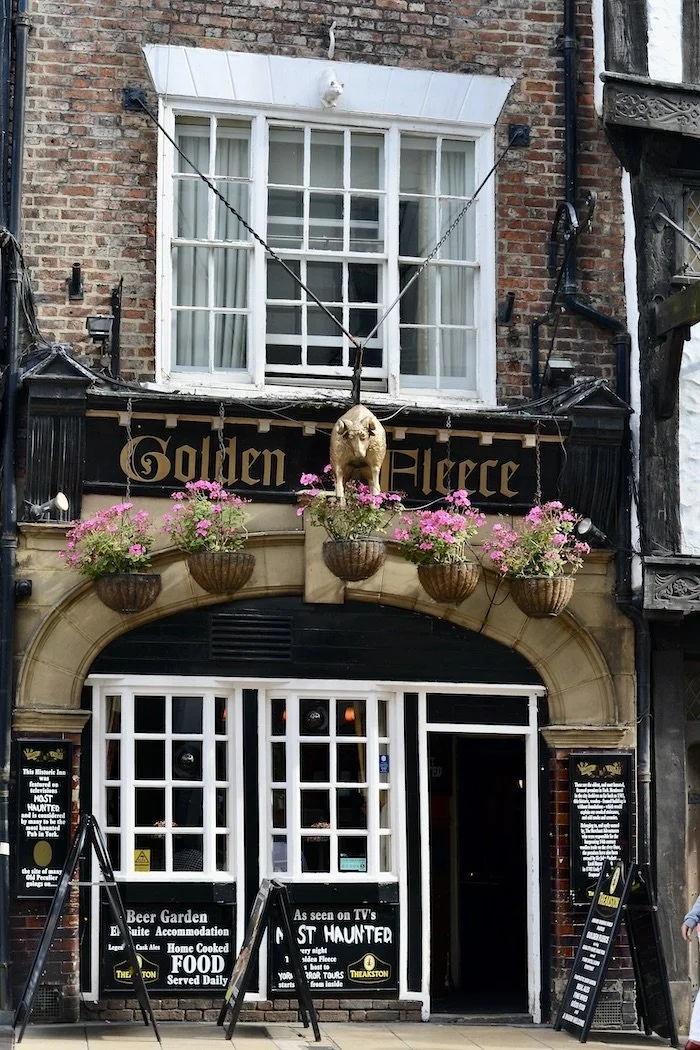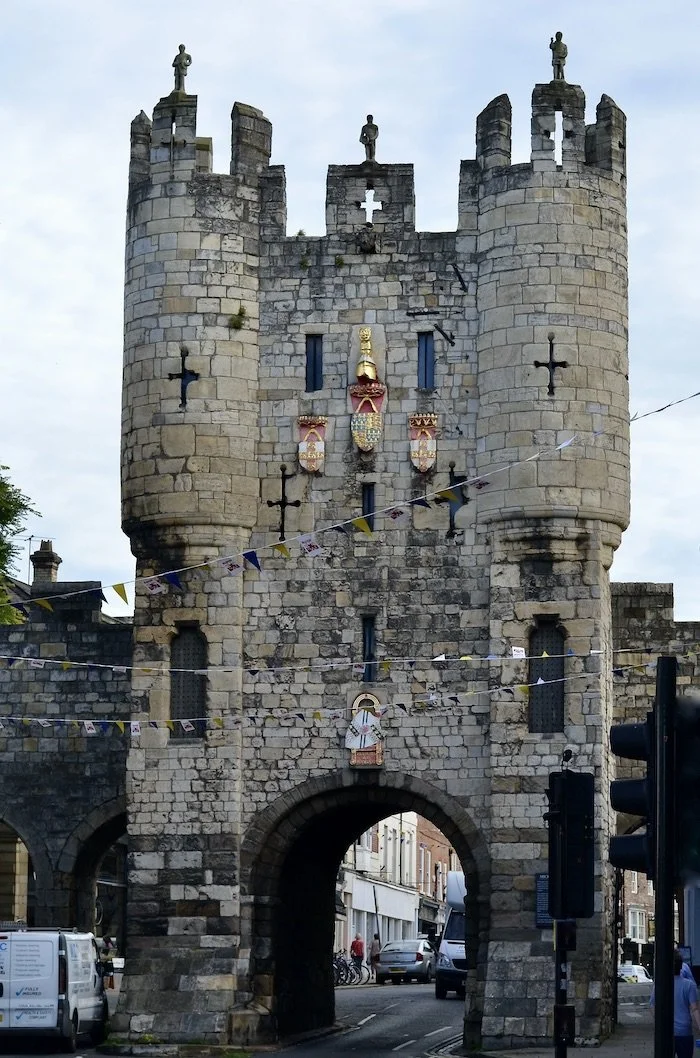At least once, go to extraordinary York
The River Ouse at York
“Oh, the places you’ll go.” ― Dr. Suess
Where the rivers Ouse and Foss converge in northeast England, on tribal land of the Brigantes, the Romans built a stone fortress in 71AD to house legionnaires. This became the city of Eboracum, first the capital of Britannia Inferior, then of Anglo Northumbria. In 866, invading Danish Vikings also made it their economic base and the capital of Danelaw. Even the city’s name attests to its lengthy history, as the Brittonic Eburakon (the place of the yew trees) became Eboracum in Latin, Anglian Eoforwic, Jórvík in Old Norse, and, after the Norman invasion, eventually York.
Nearly two millennia of history make York an extraordinary place to visit, and history greets the visitor at any of the 4 bars (gates). York’s compact ancient city core is ideal for walking and the best place to start is with an overview from atop the city walls. These well-preserved Roman fortifications were built on top of in the 13th century to again prevent attacks. At almost 2.5 km (4 miles), this is the longest, most complete ramparts in England. Nearby Clifford’s Tower, ruins of the Norman keep, was the center of York Castle, built by William the Conqueror in 1068 to dominate the north. A climb to the summit affords another good view over the old town and the new.
In the 12th century, York became prosperous trading wool and manufacturing cloth, through its location on the river and the Great North Road. The small streets remain, now filled with quirky independent shops and ancient taverns in crooked houses. It’s easy to lose oneself just wandering around or listening to diverse musical groups in busy market squares. Many streets retain names ending with “gate” from Old Nordic “gade”, though one is called “The Pavement”, perhaps the first paved way. Another medieval shopping lane, the quaint, the cobbled Shambles, is in places so narrow the timber-framed house walls seem to touch. Derived from the old English Fleshammels, the display shelves used by butchers, the overhanging upper floors shaded their meat from the sun.
The Gothic Minster, begun in 1080 and York’s striking crown jewel, is so large, it is visible from everywhere. This stone and stained-glass masterpiece was constructed on top of the original Roman fortress, the foundations of which are visible in the undercroft. York’s highest viewpoint is here, up the 275 worthwhile steps. From the same era, St. Mary’s Abbey was once the richest in northern England. Located just outside the city walls and part of York Museum, the ruins are now surrounded by a tranquil botanic garden where festivals take place and picnicking is recommended.
Two of York’s many museums stand out: Jorvik Viking Center highlights working life under Danelaw with textile and coin production, wood carving, and metal and glasswork. The National Railway Museum exhibits the city’s position as a major hub of England’s 19th-century rail network. Back at the picturesque river Ouse, the cool, winding paths along the high floodwalls are inviting for a walk or an evening cruise.
Don’t miss:
Walking the entire distance atop the mighty wall.
Serendipity:
Finding the unexpected- locals and visitors relaxing on the green lawns amongst the ruins of St. Mary’s Abbey.
Lunch Tip:
The Golden Fleece on The Pavement for beer and pub food in a crooked ancient building.
Bedtime:
The Bar Convent, a B&B in a historic building in a prime location next to an entry gate to the old town.
Subscribe for inspiration to have my posts drop directly into your inbox. *If you enjoyed what you read, please share this post with like-minded travelers.*
*All photographs are mine, taken with my Nikon D3100 or iPhone 12 Pro.*











